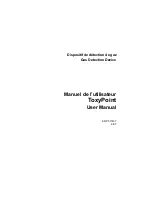
THE CONTROLS AND WHAT THEY DO
(14) The on/off /sensitivity control
switches the machine ‘on’ and sets the sensitivity level.
The detector sensitivity should normally be set at the point of threshold, that is the point
at which a background tone is just about audible. The point of threshold will be found
within the green area on the scale. The threshold point should be set with the detector
head held just above the surface of the ground. Switch the detector on, with the retune
button (15) pressed. Rotate the control further until the background tone from the speaker
is just audible. This is known as the point of threshold. Release the retune button (15). The
threshold point will be found on the green area of the scale. In severe ground conditions
(wet salt beach or mining areas for example) it may be necessary to reduce sensitivity to
below the point of threshold in order to achieve stable operation.
(16) Variable Discrimination control.
The CS440XD can ignore the signals from some
metals which are likely to be worthless. Small iron objects like building nails are the main
source of false signals, especially on farmland sites. The CS440XD can be set to ignore these
signals so you don’t waste time digging up rubbish. When the Discrimination control is
at ‘0’ this is called ‘All-Metal Mode’ and all metals are detected. The ground penetrating
capability of the detector is greatest at this setting. Turn the control to the recommended
setting (marked green on the scale 2 - 5) and signals from small iron objects are ignored but
at slightly reduced depth. Turn the control further (5 - 10) and more classes of metal target
are ignored, such as larger iron pieces and some aluminium based alloys at the top of the
scale. However, high levels of discrimination are not recommended for general detecting
purposes, due to the reduced depth penetration and also because some valuable items
(thin section hammered coins and some rings) may fall into the same category as rubbish
and not be detected.
(15) Retune Push-button.
The purpose of the Retune push-button is to keep the
detector working at peak performance by maintaining the point of threshold set on the
sensitivity control. For example, moving from dry ground to wet ground may cause the
background tone to gradually increase to an unacceptable level. Pressing the retune button
momentarily will bring the background tone to the point of threshold again.
If the retune button fails to have this eff ect, it is probably necessary to re-set the sensitivity
level. It is good detecting practice to press the retune button every few minutes or
whenever you feel that that the detector may have drifted away from its sensitivity setting.
Assembly:
Join the two stem sections (5)(2) together. Wind the search-head lead (9) around
the stem as shown in the photograph. Adjust the stem for length according to your height
(it’s easier on your back if you can stand up straight while detecting) and tighten the
twistlock stem adjuster (6). Check that the search-head (7) is parallel to the ground when
being swept in an arc and tighten (be careful not to over-tighten) the search-head retaining
screw (8). (Keep these parts clean - if they become covered in mud or sand wash and dry
these parts at the end of a day’s detecting. Don’t allow any form of lubricant onto the
rubber friction washers.)
Battery:
Push back the retaining clip and remove the cover (13) of the battery
compartment (12). Fit a 9 volt battery (MN1604, PP3 or equivalent). There are guide strips
to ensure the battery is fi tted the right way round. Do not force the battery. It should slide
in easily to connect with contact strips in the compartment. Remove the battery if the
detector is to be stored for more than a few days.
Searching Technique:
Sweep the detector head from side to side in a smooth arc.
Move forward at each sweep the width of the search-head (20cms). Keep the search-head
as close to the ground as possible, even at the ends of the arc where there is a natural
tendency for the search-head to lift. Maintain a strict search pattern so that the area being
searched is completely covered. (You will be more successful if you cover a small area of
ground thoroughly than if you search a large area of ground in random fashion.
CS440MXD_Manual.indd 3
CS440MXD_Manual.indd 3
23/01/2009 10:24
23/01/2009 10:24






















